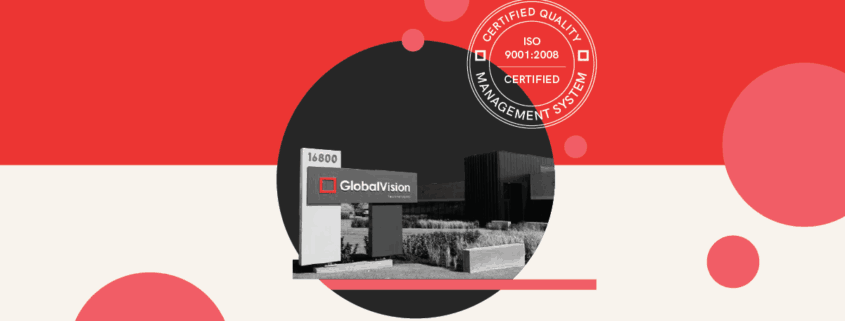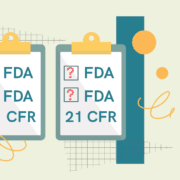An Overview of ISO 9000 and ISO 9001 and Why They are Vital for Companies
Date: November, 2017 | Category: Compliance | Author: Marvin Magasura
One way companies can ensure high-quality standards is by demonstrating to accredited organizations that they can fulfill specific QMS requirements.
Founded in 1947, the International Organization for Standardization (ISO) is in charge of promoting and setting worldwide guidelines for propriety, commercial, and industrial standards.
Currently working with over 160 countries, ISO has become the world’s largest promoter of international standards and a reference in almost every sector of the manufacturing industry.
Created in 1994, the ISO 9000 family is a series of QMS standards designed to help companies meet both customers’ and stakeholders’ needs while at the same time meeting specific product statutory and regulatory requirements.
Specifically, ISO 9000 lays down the fundamentals for every QMS, including the seven fundamental quality principles upon which the whole family is based. However, only ISO 9001 exposes the requirements that companies wishing to fulfill the standard must meet.
Looking for Process Change? Think ISO 9000
Every company needs change, but in the midst of implementing it, only a few of them think about ISO 9000. It is mostly perceived as a purely technical standard that only specific industries have to deal with. But for the experienced business owner, the Geneva-based International Standards Organization (ISO) occupies a prominent place within the company’s strategies and policies, especially when those policies involve process changes.
The strict guidelines provided in the ISO 9000 standards help companies develop a quality management system (QMS) that fits their particular situation. Basically, ISO demands strict adherence to its quality system model coupled with thorough documentation of certain processes. Independent internal audits are also held regularly in order to review the company’s system, and if everything checks out, the certification is issued.
Highlights of ISO 9000
The ISO 9000 family has become one of the world’s largest promoters of quality standards in almost every sector of the industry.
Here are some of its leading traits:
- ISO 9000 guidelines focus mainly on quality but can be applied to all types of organizations.
- They are widely adopted in more than 100 countries.
- They have global recognition with more than 1 million company certifications worldwide.
- ISO 9000 helps all types of companies, no matter their size.
- Since they come from previous standards that have been replaced, they are the true form of evolution in the industry.
- The first step in becoming certified is to decide to create an effective QMS that complies with ISO criteria.
- Companies have to set specific objectives based on ISO guidelines and then make the necessary adjustments.
- Once all ISO requirements are satisfied, the company is held to independent audits for verification.
- The process is done once the company passes the audit, but certification only lasts three years, and in that time the company must go through additional inspections to ensure compliance.
How to Get Started
Companies wishing to be certified have to deeply examine their quality management system – or even create a new one – to make sure it meets the criteria of the ISO. This mission shows the company’s desire to satisfy its customers, reduce costs, and enter a more competitive market while also adhering to government regulations.
If you’re still not sure whether you want to implement a new system or just improve the one you already have, there are countless benchmarking tools that can help you decide. Most companies will also seek advice from specialized firms that help businesses fulfill ISO 9000 requirements.
One frequently asked question a lot of first-time companies raise is how to determine if a given standard actually complies with ISO criteria. You can consult with the World Standard Services Network, a publicly accessible site for standard organizations, to answer these types of questions.
Most newbie companies are also unclear about the existence of any regional standards that are equivalent to ISO 9000. Although the ISO doesn’t publish this type of information, an ISO member in your country will likely be able to give you this information.
Structure Your Quality Management System
ISO 9000 requires certain documentation regarding all processes that could affect the quality of your product or service. It also demands keeping records of specific activities as evidence of compliance and contrasting the actual results with what was planned. Finally, it requires the integration of a program that deals with any identified inefficiencies in your processes.
At first sight, it can all seem a bit confusing and time-consuming, but with a lot of organization, any company can get ISO 9000 certification. One of the best approaches to structure your QMS is to use the step system:
- First Step: Develop a Quality Manual, e.g., create and document policies that aim to satisfy all the standard requirements. This manual should describe your entire quality policy, including your mission, organization, specific policies, and responsibilities for each part of your company. Well-written quality manuals can also provide the benefit of acting as an advertisement for the quality of your services or products.
- Second Step: Document all of your processes. It includes their purpose, what will be done, when, how, where, and by who. Additional descriptions can also include the equipment used.
- Third Step: In this final step, you have to identify the word instructions, specific forms, procedures, inspections, records, test plans, and quality plans.
With a proper QMS in place, adequate documentation, and an eventual ISO 9000 certification, any company can be confident that all processes will be made following specific requirements and meet the highest quality standards.
The Future of ISO 9000
As industries change, so do the standards that have shaped them. In fact, this is particularly true when it comes to ISO standards, which undergo periodic revisions. Special analysts state that, while it’s true ISO 9000 standards are continually evolving, recent changes are pointing in the same direction: a standardized format. The main reason behind this comes from the need to align all of the QMS together so they can handle many different standards.
On the other hand, recent ISO 9000 changes are moving toward more impartiality, competence, and consistency. The International Standardization Organization is currently trying to come up with standards where businesses and organizations practice those three principles in all their processes. The final goal is to create an industry where all companies across the globe use and recognize the same quality standards. By doing so, they assure everyone is playing on a more level field.
For instance, ISO 9001 is now one of the most prominent quality management standards in the globe that has been continually changed and revised over the years. The 9001 has moved from being a prescriptive, documentation-heavy guideline to embracing more measurement and increasingly subjective terms. Its revisions enable companies in any sector to adopt it, making it a gold standard for other ISO guidelines and an indicator of how they will evolve in the future.
By integrating the so-called ‘process approach’ – a method the ISO community has embraced in which company tasks are measured alongside coordinated goals – organizations can thoroughly evaluate the efficiency of all their processes by identifying the “weak link” in a sequence of activities. Because the ISO 9001 standard shifted toward the process approach, all of the requirements imposed on a company are now going into each and every one of its processes.
What the ISO 9001:2008 Standard Represents
The 2008 update made to the ISO 9001 standard, commonly referred to as ISO 9001:2008, outlines the main modern quality management principles and requirements companies must meet to emphasize customer satisfaction, including business motivation and continual improvement. Using ISO 9001:2008, companies focus on providing high-quality services and products to their customers, and with over 1 million certifications worldwide, it is currently one of the most broadly used QMS tools available.
The first step to becoming ISO 9001:2008 certified involves initial assessments of the company’s quality system, defining the areas that comply and those in which improvements need to be made. Once that’s been resolved, and everything has been set by the standard, a certification body will then conduct a number of audits to ensure conformance with the requirements.
If approved, the company then has to be subject to a three-year surveillance cycle. As you can see, the certification process can take as long as over a year, yet any company that understands its value knows it is worth enduring this process.
Don’t be Afraid of Internal Audits
Internal audits can be a real nightmare for most companies; however, they’re essential in order to truly examine how quality management systems perform. Because of this, they are also a considerable part of the ISO 9001:2008 certification process.
While some may be reluctant to them, it’s important to keep in mind not only what they can provide to your business, but what it says about it if you avoid them. A few benefits of internal QMS audits include:
- Increase in your business’ revenue
- Valuable feedback that strengthens your QMS
- Promotion of a positive company culture
- Greater product quality
- Better communication and consistency of your company’s processes
- Boost in workplace morale
- Increase your reputation as a company
- Achieve international quality recognition
Why do Businesses Opt for ISO 9001:2008 Certified Companies?
Imagine you’re choosing a new supplier. You will likely look for someone with the following traits:
- Delivers results consistently
- Possess great problem-solving abilities
- Provides a significant return on investment (ROI)
Companies that become ISO 9001:2008 certified already have voluntarily proven all these traits by actively being held accountable for the quality of their processes and operations. The certification also tells future clients they can expect the same high-quality results each and every time. To expand on this, here are the main benefits of working with an ISO 9001:2008 certified company:
Consistency
ISO 9001:2008 certified companies ensure a consistent workflow process every time you choose to work with them. You can even evaluate this by taking a look at the low variation rates these companies offer, which directly translates to product and ordering consistency.
Fast Problem Resolution
Be sure that if any problem arises while collaborating with an ISO 9001: 2008 certified company, the policies, and processes integrated into their QMS will quickly enable a fast resolution of the issue. But the ISO standard doesn’t end with that, it also makes sure the QMS includes a way of collecting and analyzing customer feedback and initiating effective corrective actions. Rather than waiting months for a resolution, an ISO 9001:2008 certified company would already have procedures in place to manage any potential problem that may arise.
Meeting Customers’ Expectations
As we stated before, this is the primary focus of the ISO 9001 standards. Certified companies will know the importance of adopting a QMS that ensures continued quality through the application of preventative measures. When implemented correctly, a good QMS is able to ensure every customer is satisfied while also complying with any regulatory requirements.
Maintaining Certification
An ISO certification is not a lifetime membership. Each ISO 9001:2008 certified company is regularly audited to ensure compliance with the QMS standards. This ongoing process of continued scrutiny actually increases their effectiveness and helps improve final product quality, making these companies an incredible option to work with.
Continual Improvement
By assuring regular audits, the ISO 9001:2008 standard also guarantees that companies evolve and find new ways of addressing different types of issues in order to improve over time. Continual improvement means that all processes must be run efficiently, all policies must be monitored continually, and results must always get better and better.
GlobalVision is an ISO 9001:2008 Certified Company
The ISO 9001:2008 Certification is only given to businesses capable of proving efficient management systems, therefore, companies who work hard on achieving this certification show prospective clients that all of their services and products meet and exceed the highest level of international standards.
To run a business in today’s world not only means that you have to deal with a high degree of competition but also with sky-high customer demands. That’s why complying with ISO 9001 standards has become such a huge advantage right now it can actually make or break the future of your company.
GlobalVision can proudly say it belongs in this group of organizations that offers products specifically built to endure the highest quality standards. We implement and maintain ISO guidelines as a testament to our commitment to our customers and the quality with which we develop all of our systems.
Our ISO 9001:2008 certification provides worldwide recognition for our products, and it’s a testament to our commitment to providing only the best services to our customers.
Are you ready to implement only the best quality management systems into your workflows? Start by requesting a demo of GlobalVision here or try our web-based proofreading software, Verify, for free!









